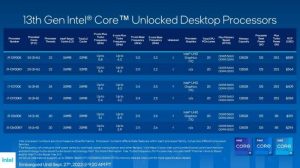
Dive into the world of RAM upgrades for computers with our comprehensive guide that will take your system to the next level of performance. Get ready for an exciting journey filled with tips, tricks, and everything you need to know about maximizing your computer’s potential.
Uncover the secrets behind upgrading RAM, from choosing the right type to installing it like a pro. Whether you’re a tech enthusiast or a newbie, this guide is your go-to resource for supercharging your computer.
RAM Upgrade Guide for Computers
Upgrading RAM is essential for improving the performance of your computer. It allows your system to run more applications simultaneously, enhances multitasking capabilities, and speeds up overall processing.
Types of RAM Compatible with Different Computer Models
There are different types of RAM available in the market, each compatible with specific computer models. The most common types include:
- DDR3: Found in older computers and laptops
- DDR4: Common in modern computers and offers faster speeds
- LPDDR4: Low-power RAM commonly found in laptops and mobile devices
Steps to Physically Install New RAM Modules in a Computer
- Shut down your computer and unplug it from the power source to avoid any electrical damage.
- Open the computer case by removing the screws or latches on the side panel.
- Locate the RAM slots on the motherboard and release the clips on each side to remove the existing RAM modules.
- Align the notches on the new RAM module with the slot on the motherboard and gently push it in until the clips lock in place.
- Close the computer case, plug in the power, and boot up your system to ensure the new RAM is detected.
Computer Repair and Consulting
Computer hardware can sometimes encounter issues that require professional repair services. These problems can range from hardware failures to software conflicts, causing disruptions in the normal functioning of your computer. In such cases, seeking help from reliable computer repair services or consultants is essential to ensure your device is back up and running smoothly.
Common Computer Hardware Issues
- Random crashes or freezes: These can be caused by faulty hardware components such as RAM, hard drive, or motherboard.
- Blue screen errors: Indicate critical system errors that may be related to hardware failures or incompatible drivers.
- Overheating: Can lead to performance issues and hardware damage if not addressed promptly.
- Noisy hardware: Fans or hard drives making unusual noises may signal impending hardware failure.
Finding Reliable Repair Services
- Ask for recommendations from friends or family members who have used computer repair services before.
- Check online reviews and ratings of local repair shops to gauge their reputation and reliability.
- Inquire about the qualifications and experience of the technicians who will be handling your repair.
- Ensure the repair service offers a warranty on their work to guarantee the quality of the repairs.
Significance of Regular Maintenance
Regular maintenance of your computer is crucial in preventing costly repairs down the line. By keeping your system clean, updating software regularly, and performing routine checks for hardware issues, you can extend the lifespan of your device and avoid unexpected breakdowns. Investing time and resources in preventive maintenance can save you money in the long run and keep your computer running smoothly.
Data Communication
Data communication plays a crucial role in computer networks by enabling the transfer of data between devices. It involves the transmission of digital data through different communication channels to ensure effective connectivity and information exchange.
Different Data Communication Protocols
Data communication protocols are standardized sets of rules and procedures that govern the exchange of data between devices in a network. Here are some common protocols and their uses:
- Transmission Control Protocol (TCP): TCP is a connection-oriented protocol that ensures reliable data transmission by dividing data into packets and reassembling them at the destination.
- Internet Protocol (IP): IP is a network layer protocol responsible for addressing and routing data packets across networks.
- User Datagram Protocol (UDP): UDP is a connectionless protocol that allows for faster data transmission but may result in occasional packet loss.
Understanding the differences between these protocols is essential for optimizing data communication in various network environments.
Data Transmission Process
The process of data transmission involves the following steps:
- Data Generation: Data is created or generated by a device or application.
- Data Encoding: The data is encoded into a format suitable for transmission, such as binary code.
- Data Transmission: The encoded data is transmitted over the network through wired or wireless channels.
- Data Reception: The receiving device decodes the transmitted data back into a readable format.
- Data Processing: The received data is processed by the device or application for further action or storage.
By understanding data communication protocols and the data transmission process, users can effectively manage and optimize data exchange in computer networks.
Computers E-Books

When it comes to learning about computers, e-books can be a valuable resource for beginners. They provide a self-paced learning experience that allows individuals to grasp the fundamental concepts at their own speed.
Recommended E-Books for Beginners
- “Computers For Dummies” by Dan Gookin: This book covers the basics of computer hardware, software, and troubleshooting in an easy-to-understand format.
- “The Complete Idiot’s Guide to Computer Basics” by Joe Kraynak: A comprehensive guide that introduces readers to essential computer skills and knowledge.
- “Code: The Hidden Language of Computer Hardware and Software” by Charles Petzold: This book explains the inner workings of computers and how they process information.
Benefits of E-Books for Self-Paced Learning
- Flexibility: E-books allow individuals to learn at their own pace, pausing and revisiting sections as needed.
- Cost-effective: E-books are often more affordable than physical books, making them accessible to a wider audience.
- Interactive elements: Some e-books include multimedia components such as videos and quizzes to enhance the learning experience.
Finding Reputable Sources for Computer E-Books
- Official websites of renowned publishers like O’Reilly, Wiley, and Pearson offer a wide range of computer-related e-books for purchase.
- Platforms like Amazon Kindle, Google Books, and Apple Books provide a vast selection of e-books on various computer topics.
- Websites like Project Gutenberg and Open Library offer free access to public domain e-books, including some computer-related titles.
Graphics and Multimedia
When it comes to graphics and multimedia performance, the amount of RAM in a computer plays a crucial role in ensuring smooth and efficient operation. RAM (Random Access Memory) is used by the computer to temporarily store data that is actively being used by the system, including graphics and multimedia files.
Impact of RAM on Graphics and Multimedia Performance
RAM directly impacts the performance of graphics and multimedia tasks on a computer. With more RAM available, the system can load and process large graphics files or multimedia content much faster. Insufficient RAM can lead to slow loading times, lagging, and even crashes when working with graphics-intensive applications or multimedia files.
- Allows for faster rendering and processing of images and videos
- Enables smoother multitasking when working with multiple graphics or multimedia applications
- Reduces the likelihood of system freezes or crashes during intensive graphics or multimedia tasks
Importance of GPU and RAM Synergy for Smooth Multimedia Playback
In addition to RAM, the Graphics Processing Unit (GPU) also plays a crucial role in handling graphics and multimedia tasks on a computer. The synergy between the GPU and RAM is essential for ensuring smooth multimedia playback and efficient rendering of graphics.
- The GPU is responsible for processing and rendering graphics and multimedia content, while RAM provides the necessary data and instructions for these tasks.
- Having a dedicated GPU with its own memory can offload the processing burden from the system RAM, leading to better overall performance.
- Ensuring that the GPU and RAM work in harmony can result in seamless multimedia playback, faster rendering times, and improved visual quality.
Popular Software for Graphics and Multimedia Tasks
There are several popular software applications used for graphics and multimedia tasks, catering to different needs and skill levels. Some examples include:
- Adobe Photoshop: A powerful image editing software used for photo retouching, graphic design, and digital painting.
- Adobe Premiere Pro: A professional video editing software for creating high-quality videos with advanced editing tools and effects.
- Autodesk Maya: A 3D modeling and animation software widely used in the film and gaming industry for creating detailed 3D graphics and animations.
- Final Cut Pro: A video editing software exclusive to Mac users, known for its intuitive interface and advanced editing features.
Computers Hardware
When it comes to computers, hardware components play a crucial role in determining the performance and capabilities of the system. Understanding the different types of hardware components and their functions is essential for building or upgrading a computer.
Types of Computer Hardware Components
- CPU (Central Processing Unit): The CPU is often referred to as the “brain” of the computer, responsible for executing instructions and performing calculations.
- GPU (Graphics Processing Unit): The GPU is dedicated to handling graphics-related tasks, such as rendering images and videos.
- Motherboard: The motherboard serves as the main circuit board that connects all the hardware components together, providing communication and power distribution.
- RAM (Random Access Memory): RAM is temporary storage that allows the CPU to access data quickly, improving the overall speed and performance of the system.
- Storage Devices: This includes hard drives, solid-state drives (SSDs), and other storage mediums where data is stored long-term.
Functions of Essential Hardware Components
- The CPU is responsible for executing instructions and performing calculations, determining the overall processing power of the computer.
- The GPU handles graphics-related tasks, such as rendering images, videos, and animations, crucial for gaming and multimedia applications.
- The motherboard acts as the central hub that connects all hardware components together, facilitating communication and power distribution.
Choosing Compatible Hardware for Optimal Performance
It is crucial to select hardware components that are compatible with each other to ensure optimal performance and functionality. Mismatched hardware can lead to compatibility issues, reduced performance, and even system failures. Consider factors such as socket types, power requirements, and form factors when choosing hardware components for your computer.
Last Word

In conclusion, upgrading your computer’s RAM is a game-changer when it comes to performance. Say goodbye to lag and hello to seamless multitasking and lightning-fast speeds. Take the first step towards a faster and more efficient system today with our RAM upgrade guide for computers.
Question Bank
What types of RAM are compatible with different computer models?
RAM compatibility depends on the motherboard and processor of your computer. Check your system specifications or consult the manufacturer for guidance.
How does upgrading RAM improve computer performance?
Upgrading RAM allows your computer to run more programs simultaneously without slowing down. It enhances multitasking capability and overall speed.
Is it difficult to install new RAM modules in a computer?
Installing RAM is relatively simple and can be done by following step-by-step instructions. Just ensure you are grounded to prevent static discharge.





